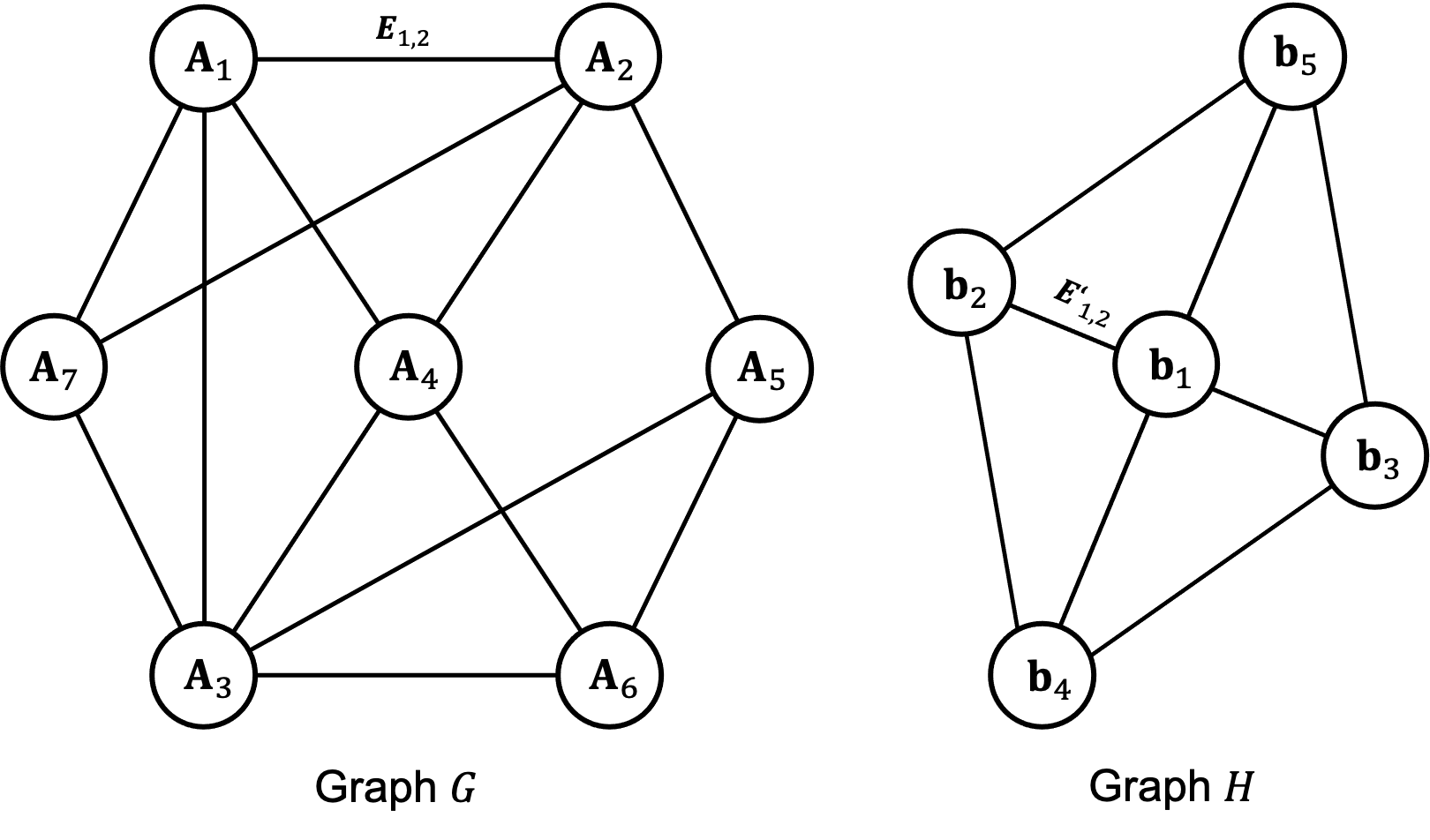I am working on proving the NP-hardness of a problem by reducing it from the subgraph isomorphism problem. Currently, I can reduce it from the following problem:
Problem 1: Given two graphs $G=(V, E)$ and $H=(V', E')$, is there a subgraph $G_0$ of $G$ that is isomorphism to $H$ under a linear mapping of vertices?
But the original subgraph isomorphism problem is defined as:
Problem 2: Given two graphs $G=(V, E)$ and $H=(V', E')$, is there a subgraph $G_0$ of $G$ that is isomorphism to $H$ under a bijection of vertices?
Can anybody tell me how to further reduce Problem 1 from Problem 2?
Edit: say I have the following graphs where $A_i, b_j \in \mathbb{R}$, and I want to see if there is a linear function parameterized by $\beta$ in the form of $b_j=\beta A_i$ that can make $G_0$ and $H$ isomorphism.
Note that the figure is just for demo and we don't know if $H$ is a complete graph.

